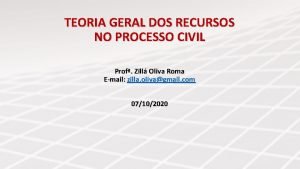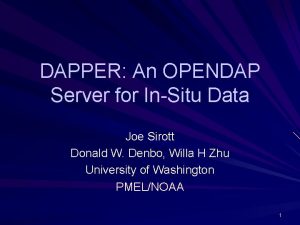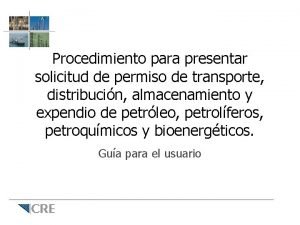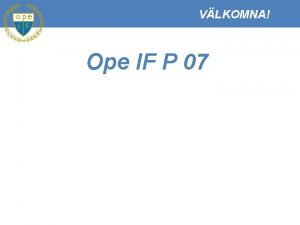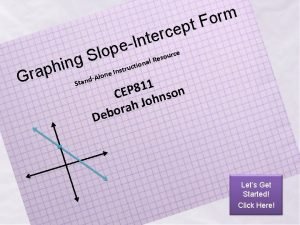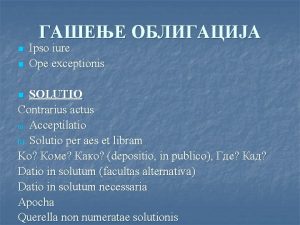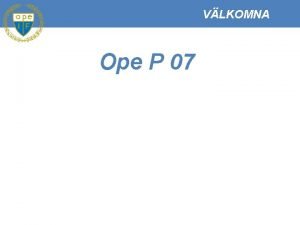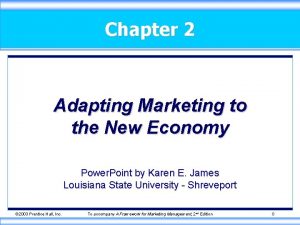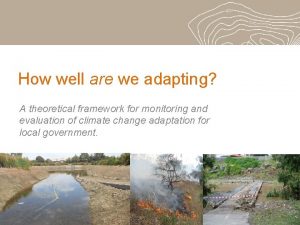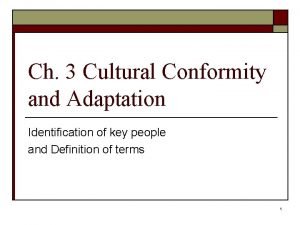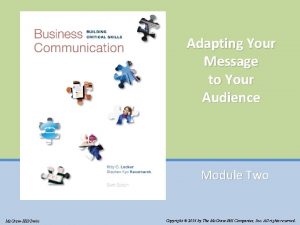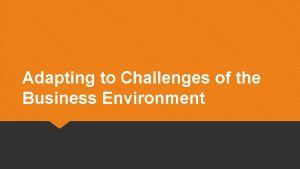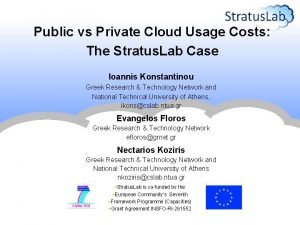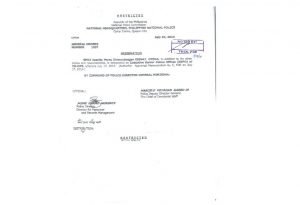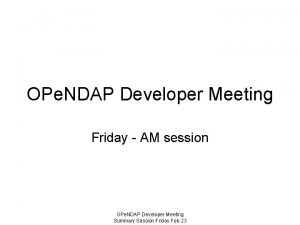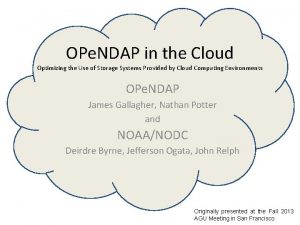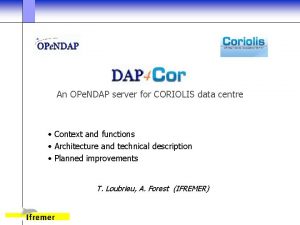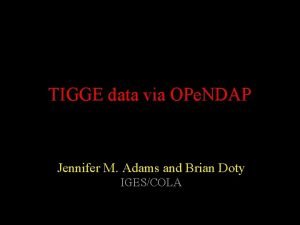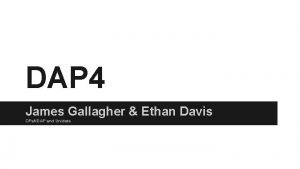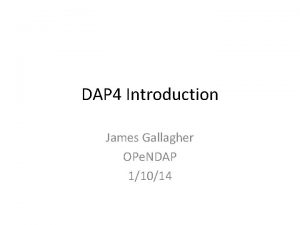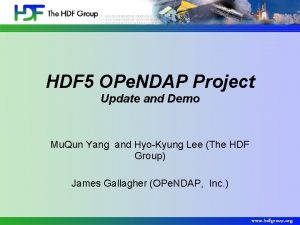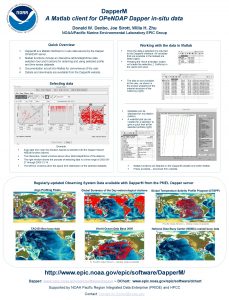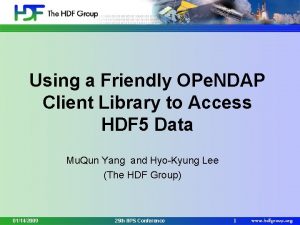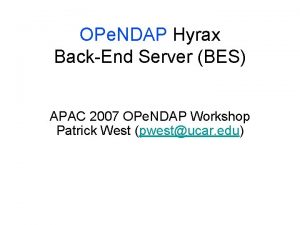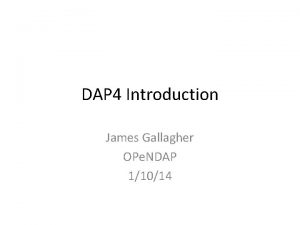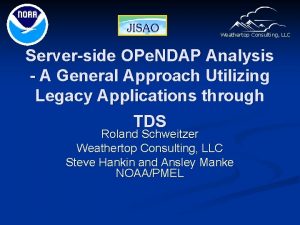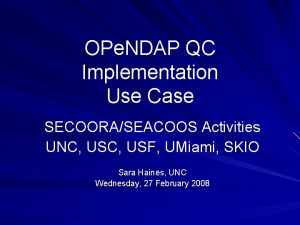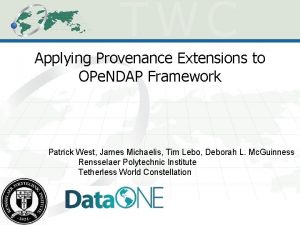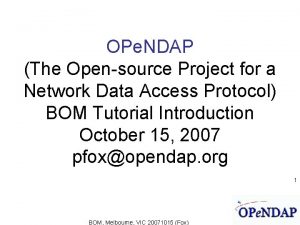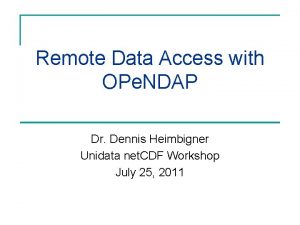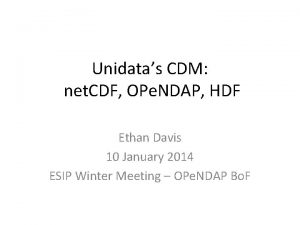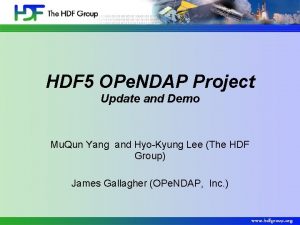OPe NDAP in the Cloud Adapting an existing

























- Slides: 25

OPe. NDAP in the Cloud Adapting an existing web server to S 3 James Gallagher Nathan Potter Kodi Neumiller jgallagher@opendap. org ndp@opendap. org kneumiller@opendap. org This work was supported by NASA/GSFC under Raytheon Co. contract number NNG 15 HZ 39 C. This document does not contain technology or Technical Data controlled under either the U. S. International Traffic in Arms Regulations or the U. S. Export Administration Regulations. CEOS WGISS 48 October 9, 2019

Some things to keep in mind. . . ● ● S 3 is a powerful tool for data storage because it o can hold large amounts of data o supports a high level of parallelism S 3 is a Web Object Store – it supports a simple interface based on HTTP S 3 stores ‘objects’ that are atomic; they cannot be manipulated as with a traditional file system, except… It is, however, possible to transfer portions of objects from S 3, using HTTP Range-GET CEOS WGISS 48 October 9, 2019 2

Outline ● ● ● CEOS WGISS 48 How we modified the data server (Hyrax) to serve data stored in S 3 When serving data from S 3, the Hyrax server’s web API is unchanged Virtual sharding provides a (new) way to aggregate data October 9, 2019

Serving Data Stored in S 3: Approaches Evaluated CEOS WGISS 48 ● Caching – Similar to ‘S 3 file systems’ ● Subsetting – Based on HTTP Range GET ● Baseline – Reading from a spinning disk ● All of these ran in the AWS environment October 9, 2019

Caching Architecture ● ● Data are stored on S 3 as files Files are transferred from S 3 to a spinning disk cache (EBS, EFS) Data are read from the cached files and returned to clients Similar in operation to ‘S 3 file systems’ Advantages: Works with any file, easy to use with legacy software, files easy to obtain, minimal configuration metadata needed Disadvantages: Initial cost to transfer the whole file, slower than the subsetting architecture CEOS WGISS 48 October 9, 2019

Subsetting Architecture - Virtual Sharding ● ● Data are stored on S 3 as files (HDF 5) Data are read from S 3 by reading parts (virtual shards) of the file Virtual Sharding: Break a file into virtual pieces. Each shard is defined by its size and position in the file Advantages: faster than caching, data cache not needed, only data needed are transferred from S 3 Disadvantages: more configuration metadata needed CEOS WGISS 48 October 9, 2019

Optimizations to the Virtual Sharding Approach 1. Optimize metadata so access to data in S 3 is not needed 2. Read separate shards from data files in parallel 3. Ensure that HTTP ‘connections’ are reused by using either HTTP 2 or HTTP 1. 1 with ’Keep-Alive’ CEOS WGISS 48 October 9, 2019

Performance Before Optimizations Without optimization, caching outperforms the subsetting architecture for some requests*, even though it transfers much more data than needed *For large HDF 5 files with ~1, 000 compressed variables, requesting ~40 variables takes longer Shown: Caching and subsetting (yellow and blue) and access when data are stored on spinning disk (green) CEOS WGISS 48 October 9, 2019

Performance After Optimizations After optimization the subsetting algorithm performance exceeds the caching algorithm Shown: Caching and subsetting (yellow and blue) and access when data are stored on spinning disk (green) CEOS WGISS 48 October 9, 2019

Usability of Clients – Web API Consistency ● ● ● Five client applications were tested with Hyrax serving data stored on Amazon's S 3 Web Object Store. What we tested: ○ Access to data from a single file ○ Access to data from aggregations of multiple files Two kinds of aggregations were tested: ○ Aggregations using Nc. ML* ○ Aggregations using the 'virtual sharding' technique we have developed for use with S 3 *Net. CDF Markup Language CEOS WGISS 48 October 9, 2019

Clients Applications Tested 1. 2. 3. 4. 5. 1 Data Panoply – a Java client; built-in knowledge of DAP 1 and THREDDS 2 catalogs, uses the Java net. CDF library Jupyter notebooks & xarray – Python (can use Py. DAP or net. CDF C/Python) NCO – a C client, C net. CDF library Arc. GIS – a C (or C++? ) client, either libdap or C net. CDF (we're not sure) GDAL – a C++ client, libdap Access Protocol, 2 Thematic Realtime Environmental Distributed Data Services CEOS WGISS 48 October 9, 2019

Panoply ● ● See live demo (using 4. 0. 5, which has some fixes for servers that use Tomcat 8 – nothing to do with DAP or S 3) To open a server's catalog: File-->Open Remote Catalog. . . ○ CEOS WGISS 48 http: //t 41 m 1. opendap. org: 8080/opendap/catalog. html October 9, 2019

Panoply, continued ● To open a single dataset directly: File-->Open Remote Dataset. . . ○ CEOS WGISS 48 http: //t 41 m 1. opendap. org: 8080/opendap/dmrpp_s 3/merra 2/MERRA 2_100. inst. M_2 d_asm_Nx. 198 001. nc 4. dmrpp October 9, 2019

Jupyter notebooks and xarray Download the notebook from the Jira ticket (HK-380) Use dataset_url = 'http: //t 41 m 1. opendap. org: 8080/opendap/dmrpp_s 3/airs/AIRS. 2015. 01. L 3. Ret. Std_IR 001. v 6. 0. 11. 0. G 15013155825. nc. h 5. dmrpp' . . . CEOS WGISS 48 October 9, 2019

Byproduct: A new way to build data aggregations ● ● Definition: The formation of a number of things into a cluster. In the Hyrax data server, data aggregations are generally defined using a domain specific language called Nc. ML We have defined a new tool, called DMR++, to build aggregations using the virtual sharding system with data stored on S 3 This new technique is faster in the general case, and can be much faster when a small amount of data from many discrete files much be accessed CEOS WGISS 48 October 9, 2019

We can use DMR++ to Define Aggregations ● ● CEOS WGISS 48 October 9, 2019 Write a single DMR++ file that references all of the data. This is possible because the 'virtual sharding' technique treats parts of variables as individually addressable 'shards. '

Comparison of Nc. ML vs DMR++ Aggregations ● ● ● CEOS WGISS 48 October 9, 2019 Difference of ~50 s versus ~12. 5 s Access to one variable for all or 365 days The aggregation consists of 365 files/objects (one for each day)

Orthogonal Accesses – Nc. ML versus DMR++ ● ● ● CEOS WGISS 48 October 9, 2019 Slicing across the granules shows the main benefit of this technique The 'sharding' aggregation is significantly faster than our implementation of Nc. ML Why: Our Nc. ML is processed by an interpreter which iterates over all the needed granule descriptions, while the sharding technique is roughly equivalent to a 'compiled' version of the aggregation

Conclusions ● ● CEOS WGISS 48 Existing files can be moved to S 3 and accessed using existing web APIs The web API implementation will have to modified to achieve performance on a par with data stored on a spinning disk Existing client applications work as before The new implementation provides additional benefits such as enhanced data aggregation capabilities October 9, 2019

This work was supported by NASA/GSFC under Raytheon Co. contract number NNG 15 HZ 39 C. in partnership with CEOS WGISS 48 October 9, 2019 20

Bonus Material – Short version ● ● ● How hard will it be to move this code to Google? Answer: About 4 hours. And, we can cross systems, running Hyrax on AWS or Google and serving the data from S 3 or Google GCS. Performance was in the same ballpark Originally presented at C 3 DIS, Canberra, May 2019. Four-slide version follows. . . CEOS WGISS 48 October 9, 2019

Case Study 2: Web Object Service Interoperability Moving a System to a different cloud provider ● ● Given: Hyrax data server running on AWS VMs, and Serving data stored in S 3 Move the server to Google Cloud VMs and Serve the data from Google Cloud Store How much modification will the software and data need? How long with the process take? Will the two systems have significantly different performance? CEOS WGISS 48 October 9, 2019

Case Study Discussion ● ● ● The Hyrax server is compiled C++ The data objects in Amazon S 3 were copied to Google GCS The metadata describing the data objects were copied and ○ Case 1: were left referencing the data objects in S 3 ○ Case 2: were modified to reference the copied objects in GCS No modification to the server software Time needed to configure the Google cloud systems: less than 1 day CEOS WGISS 48 October 9, 2019

Comparison of Performance CEOS WGISS 48 October 9, 2019 *Times scaled to account for differences in the VM core number

Case Study 2: Discussion ● ● ● Web object store access used the REST API (i. e. , the https URLs) ○ Each of the two web object stores behaved 'like a web server' ○ Using common interfaces supports interoperability ○ Other interfaces might not Virtual machines ○ I used the same Linux distribution; legacy code known to run there ○ Switching Linux variant would increase the work The buckets were public ○ CEOS WGISS 48 Differences in authentication requirements might require software modification October 9, 2019
 Principio da fungibilidade
Principio da fungibilidade Dapper joe
Dapper joe Pre registro ope
Pre registro ope Bingo furuparken
Bingo furuparken Intercepy
Intercepy Ope exceptionis
Ope exceptionis Ope accreditation
Ope accreditation Emendatio ope codicum
Emendatio ope codicum Ope if
Ope if Adapting marketing to the new economy
Adapting marketing to the new economy How well are we adapting
How well are we adapting Adapting the price
Adapting the price The process of adapting borrowed cultural traits.
The process of adapting borrowed cultural traits. Adopting and adapting teaching materials
Adopting and adapting teaching materials Adapting curriculum to bridge equity gaps
Adapting curriculum to bridge equity gaps Adapting the price
Adapting the price Adapting the message to your audience
Adapting the message to your audience How well are we adapting
How well are we adapting Adapting to your audience
Adapting to your audience Adapting to challenges of the micro environment
Adapting to challenges of the micro environment Cloud integration patterns
Cloud integration patterns Public cloud vs private cloud cost analysis
Public cloud vs private cloud cost analysis Snap cloud
Snap cloud Pods aggregation and silos in cloud computing
Pods aggregation and silos in cloud computing Organizational structure pnp
Organizational structure pnp Living not existing
Living not existing
